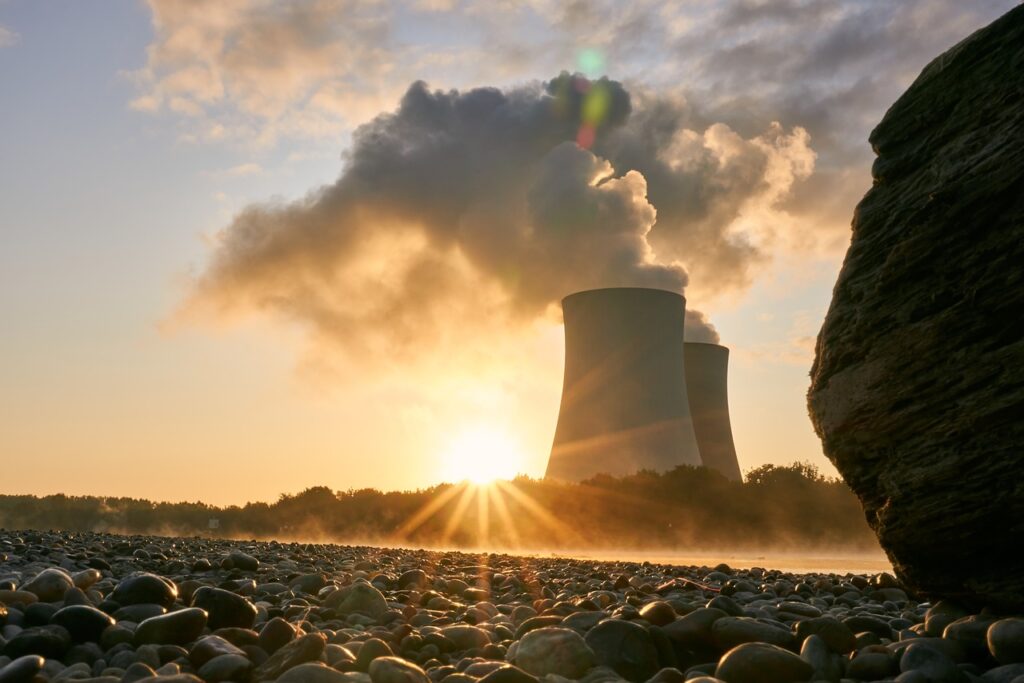The rise of artificial intelligence and global data center expansion is rewriting energy consumption rules, pushing traditional power grids to their limits. With electricity demand expected to climb by as much as 75% globally by 2050, the U.S. energy grid is already straining under the weight of growing electrification, reshoring, and AI-driven operations. As Big Tech giants like Amazon, Microsoft, Google, and Meta navigate this evolving landscape, nuclear energy has emerged as a pivotal player in their strategies.
Data Centers and the Power Conundrum
Data centers have evolved from back-end facilities to critical infrastructures, driving the modern economy. Fueled by AI’s computational demands, these centers now consume energy on scales comparable to entire cities. For instance, training a single AI model can require as much electricity as powering thousands of homes. The Department of Energy projects that this escalating demand will only intensify, with AI and cloud computing among the primary contributors.
In 2022, geopolitical turbulence, including the Russia-Ukraine conflict, compounded energy price volatility, reigniting global energy independence and security conversations. This backdrop accelerated a renewed interest in nuclear power, a 24/7, emissions-free energy source capable of meeting surging base-load demands. Unlike intermittent renewables such as solar and wind, nuclear offers the reliability required for the always-on nature of data centers.
Tech’s Calculated Nuclear Investments
Leading technology firms are making sizable bets on nuclear power to secure the energy needed for their AI ambitions. Amazon, for example, recently acquired a data center and entered a $500 million nuclear power agreement with Talen Energy in Pennsylvania. Microsoft is collaborating with Constellation Energy to modernize the Three Mile Island nuclear facility, investing $1.5 billion into upgrades. Meanwhile, Google is partnering with Kairos Power to explore advanced reactor technologies.
The broader strategy hinges on deploying Small Modular Reactors (SMRs). These reactors, which produce around 300 MW compared to traditional reactors’ 1 GW output, are designed for modular assembly and reduced construction costs. By enabling incremental capacity additions, SMRs align well with the scalable energy demands of data centers.
Despite their promise, SMRs face hurdles. Regulatory approval processes are lengthy, and the first U.S. units are unlikely to be operational before 2030. While proponents champion SMRs’ cost-effectiveness and flexibility, skeptics argue that traditional large-scale reactors are indispensable for achieving climate and energy goals.
Challenges and Historical Shadows
The nuclear sector is no stranger to controversy. Accidents like Chernobyl, Fukushima, and Three Mile Island left indelible marks on public perception, fostering skepticism that persists to this day. Misinformation and fears stemming from nuclear weapons proliferation further entrenched opposition. Cost overruns and lengthy construction timelines have also historically plagued nuclear projects, diminishing their appeal compared to faster-to-market alternatives.
However, Big Tech’s involvement could mark a turning point. With access to substantial capital and vested interests in reliable power, these companies bring a new level of momentum to nuclear initiatives. Their investments are not merely about profitability but about securing the energy foundation for the future of AI and beyond.
Bridging the Energy Gap
As energy demand in the U.S. surges—projected to rise by 20% in the next decade—nuclear’s role is poised to expand from its current 20% share of electricity generation. The urgency is compounded by the limitations of renewable resources, which, while critical, cannot alone sustain the scale of power required.
Reviving dormant reactors and building new facilities present logistical and regulatory challenges but are increasingly considered necessary. Retrofitting old plants can cost anywhere from $100 million to over $1 billion, depending on their condition. For tech companies, these costs are viewed as long-term investments in stability and sustainability.
A Technological and Energy Crossroads
The partnership between Big Tech and nuclear energy represents a critical inflection point in the energy landscape. By driving investments in SMRs and large-scale reactors, companies like Amazon and Microsoft are not just addressing their immediate energy needs—they are reshaping the broader trajectory of the energy sector. This alignment of technological innovation with infrastructure development echoes earlier ambitions of a nuclear-powered future, signaling a potential shift toward a more resilient and sustainable energy paradigm.





